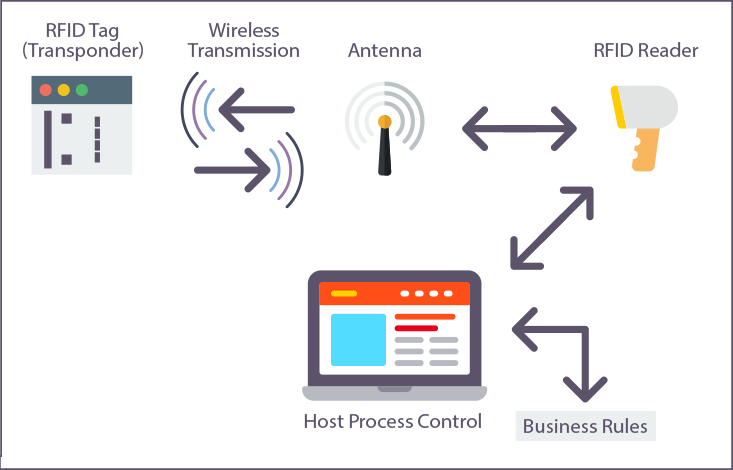Asset Tracking and Maintenance and Indoor Positioning System
Indoor Positioning System, Asset Tracking and Maintenance software for all forms of business.

UHF RFID – Radio Frequency Identification
The UHF frequency band covers the range from 300 MHz to 3 GHz. Systems complying with the UHF Gen2 standard for RFID use the 860 to 960 MHz band. While there is some variance in frequency from region to region, UHF Gen2 RFID systems in most countries operate between 900 and 915 MHz.
The read range of passive UHF systems can be as long as 12 m, and UHF RFID has a faster data transfer rate than LF or HF. UHF RFID is the most sensitive to interference, but many UHF product manufacturers have found ways of designing tags, antennas, and readers to keep performance high even in difficult environments. Passive UHF tags are easier and cheaper to manufacture than LF and HF tags.
UHF RFID is used in a wide variety of applications, ranging from retail inventory management, to pharmaceutical anti-counterfeiting, to wireless device configuration. The bulk of new RFID projects are using UHF opposed to LF or HF, making UHF the fastest growing segment of the RFID market. Radio frequency identification (RFID) tags are used in a wide range of applications such as: identifying animals, tracking goods through the supply chain, tracking assets such as gas bottles and beer kegs, and controlling access into buildings. RFID tags include a chip that typically stores a static number (an ID) and an antenna that enables the chip to transmit the stored number to a reader. Some RFID tags contain read/write memory to store dynamic data. When the tag comes within range of the appropriate RF reader, the tag is powered by the reader’s RF field and transmits its ID to the reader.
RFID tags are simple, low-cost and commonly disposable, although this is not always the case such as reusable laundry tags. There is little to no security on the RFID tag or during communication with the reader. Any reader using the appropriate RF frequency (low frequency: 125/134 KHz; high frequency: 13.56 MHz; and ultra-high frequency: 900MHz) and protocol can get the RFID tag to communicate its contents. (Note that this is not true of car keys which contain a secure RFID tag.) Passive RFID tags (i.e., those not containing a battery) can be read from distances of several inches (centimetres) to many yards (meters), depending on the frequency and strength of the RF field used with the particular tag.
How does RFID work:

NFC – Near Field Communication
NFC, or near-field communication, is an easy and intuitive technology that allows you to use your mobile phone for special purposes. An NFC tag can share and link to information such as web pages, social media and all other sorts of other information generally. Other areas where NFC is starting to evolve into are making payments, opening doors secured with contactless locks, logging on to computers and many more. All of these actions have something in common, that is they invoke an action based on you placing your phone (or any other NFC device) near (the N in NFC) the thing you want to read or interact with.
NFC is bridging the gap between both the physical and virtual worlds. By bringing two devices near each other, there is a virtual reaction. Bluetooth and WiFi do not have this ease in set up. So the key feature of NFC is: It is automatic! There is no need to launch an application and it is totally “passive” meaning no batteries.

